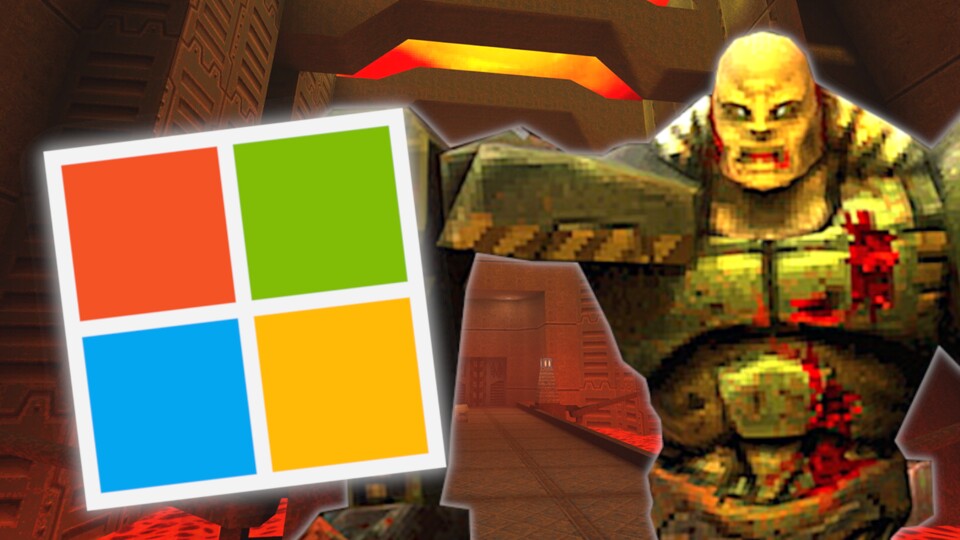AI in Gaming: Revolutionizing US Entertainment in 2025
It is no longer a futuristic concept—it’s here, and it’s changing how we play, create, and experience entertainment in the US.
Imagine it’s 1997. You’re parked in front of a humming CRT monitor, Mountain Dew in hand, fragging foes in Quake II—the gritty shooter that defined a generation. Now snap to 2025: Microsoft’s unleashed an AI-generated version of that classic, playable right in your browser. No discs, no downloads, just pure artificial intelligence dreaming up levels on the fly. It’s part nostalgia trip, part sci-fi fever dream—and for US gamers, it’s a front-row seat to how AI might just rewrite the rules of interactive entertainment.
What is AI in Gaming?
AI’s been popping up everywhere lately—churning out text, images, even TikTok-worthy tunes. But now it’s crashing the gaming party. Microsoft’s Muse AI model, first teased earlier this year, is the brain behind this Quake II revival. Trained on mountains of gameplay data (think thousands of hours of humans dodging rockets), Muse can generate levels, enemies, and action in real time. The result? A browser-based demo via Copilot Labs that’s less a polished remake and more a proof-of-concept with a retro twist.
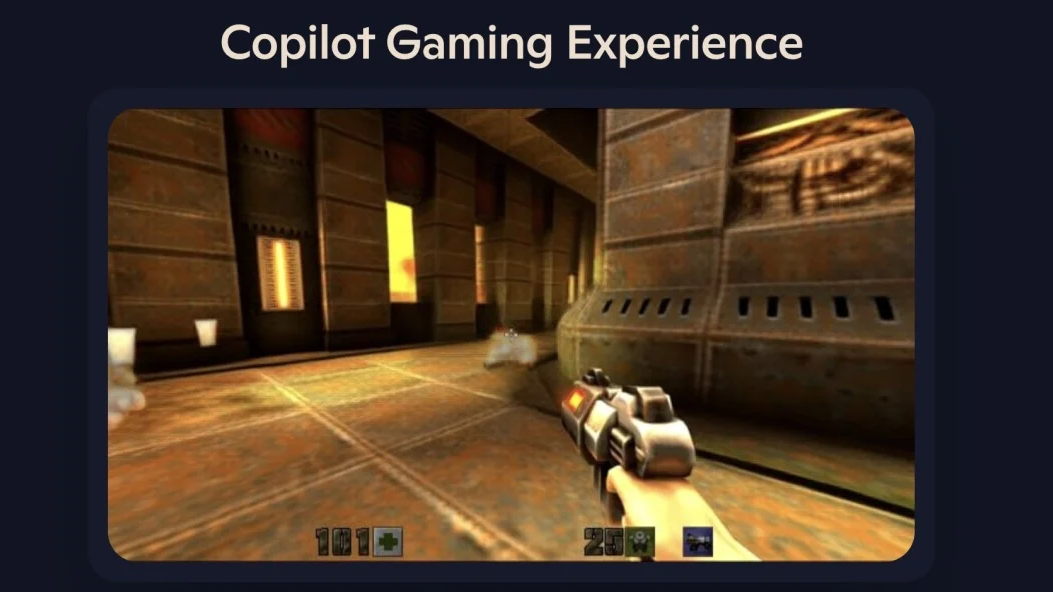
Why Quake II? It’s a no-brainer for American fans. Launched by id Software in ‘97, it was a first-person shooter titan—fast, fierce, and a multiplayer pioneer. From dorm room LAN parties to modding communities still tinkering today, it’s got serious street cred. Microsoft’s AI riff isn’t just flexing tech chops; it’s tipping its hat to a US gaming icon while asking, “What if machines could rebuild our classics?”
How AI in Gaming Shapes the Future
I dove into this AI Quake II myself, and hoo boy—it’s bizarre. Picture playing a game in a dream where the rules keep shifting. You load it up in Copilot’s “Gaming Experience,” click past a quirky M-rating popup (it asks if you’re 18, even though M is 17+—first red flag), and land in a blocky, first-person world. There’s a pistol-wielding hand, a health bar, and ammo counter—familiar stuff. But press a key, and reality wobbles.
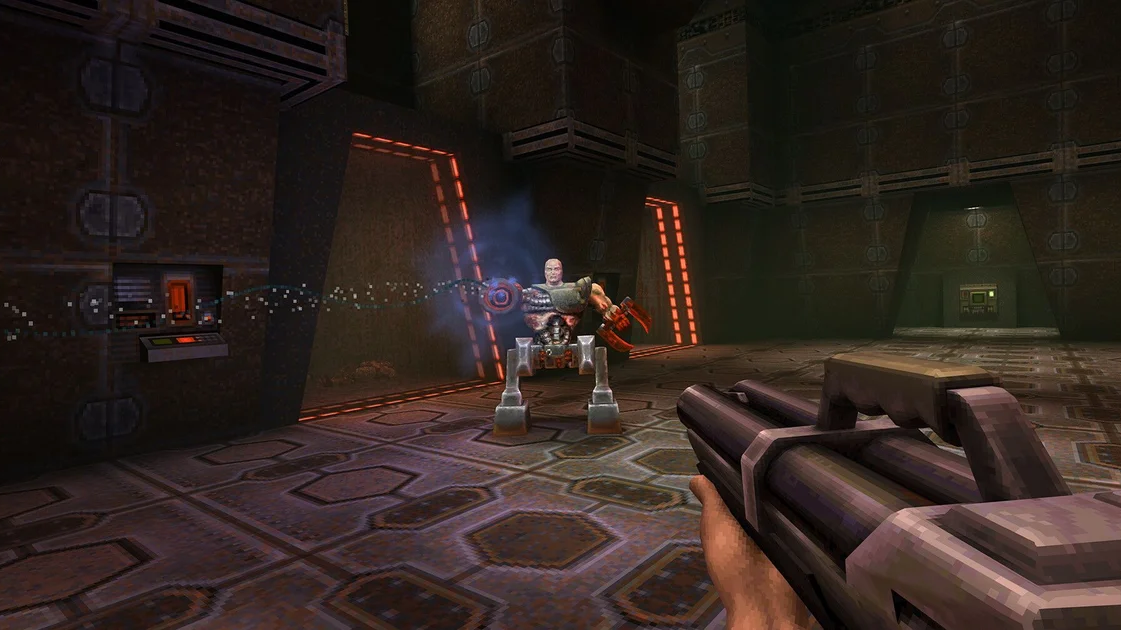
There’s a full-second lag between your move and the screen catching up, like the AI’s sipping coffee before responding. Enemies don’t spawn—they just appear, blurry and ghost-like, as if Picasso painted them mid-fight. Stop moving, and the world freezes, SuperHot-style; take a step, and the room might morph—hallways turn into elevators, floors shift underfoot. I strafed past one enemy, and it literally fell apart, melting into the ground like a rejected CGI effect. Health? It dips when you’re hit, but hitting zero doesn’t kill you—the counter just bounces around like a glitchy pinball machine.
It’s not all chaos. You start in the same room each time, and with luck, you can explore a semi-stable map. But spin around too fast, and you’re teleported across the level—or stuck in a loading screen that never ends. As Jake Peterson from Lifehacker put it, “It feels unstable and ephemeral.” I’d add: it’s like gaming on a rollercoaster—thrilling, disorienting, and a little nauseating (seriously, I felt queasy after 10 minutes).
Rough Edges, Big Dreams
Let’s be real: this isn’t replacing Call of Duty anytime soon. The resolution’s a blurry 640×360 (up from Muse’s early 300×180 tests), the frame rate’s choppy, and Microsoft caps your playtime—probably to spare their servers or your sanity. Enemies are smudgy blobs, interactions glitch, and the whole thing can crash faster than a ‘90s dial-up connection. One blogger on X called it “a blurry mess,” and they’re not wrong—it’s more tech demo than playable game.
But that’s the point. This isn’t about perfection; it’s about potential. Microsoft’s pitching Muse as a game-changer for developers—think rapid prototyping for indie studios or resurrecting lost classics without their original code. Phil Spencer, Microsoft Gaming CEO, sees it as a preservation tool: “A model could learn old games and make them portable to any platform,” he said in February. For US gamers mourning titles like Silent Hill stuck on ancient hardware, that’s a tantalizing promise.
AI Tools in the Spotlight
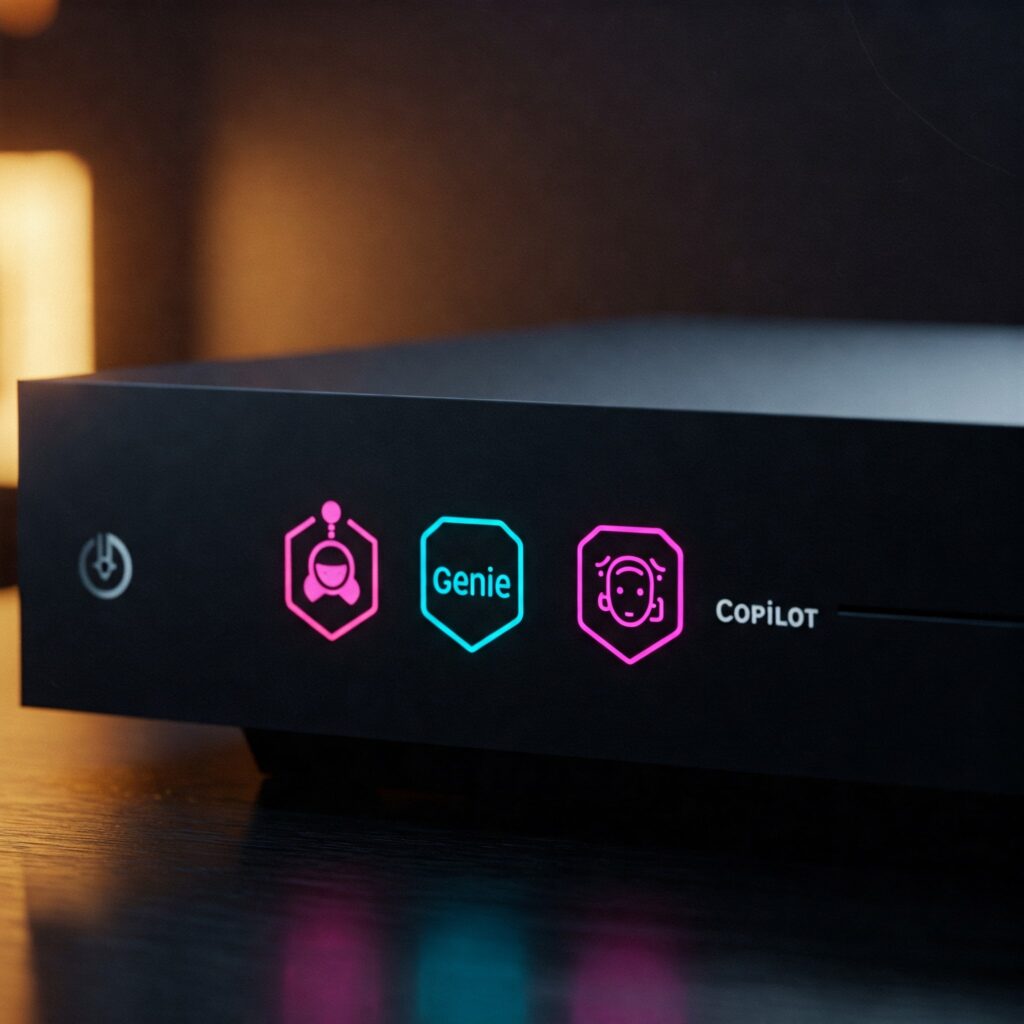
Muse isn’t alone in this AI gaming wave. Google’s Genie model generates playable environments from text prompts, while startups like Virtual Protocols have demoed AI-spun Super Mario. Microsoft’s edge? Muse’s real-time generation, trained on real gameplay—like Bleeding Edge’s 1 billion+ images and inputs. It’s less about copying code and more about mimicking vibes, which could save time and cash for creators. Imagine a small US studio in Austin or Seattle whipping up a pitch in days, not months—AI as a creative wingman, not a replacement.
Why US Creators Are All In
America’s a hotbed for this tech. Why? We’ve got the culture—Hollywood’s storytelling chops meet Silicon Valley’s innovation—and the cash. The US video game market raked in $57 billion in 2023, per the Entertainment Software Association, and AI adoption’s spiking. A 2024 report from Newzoo pegs 40% of US developers experimenting with AI tools. From indie devs cutting costs to giants like Microsoft pushing boundaries, it’s a perfect storm. Plus, Americans love a good nostalgia hit—Quake II’s AI glow-up fits right in.
The Flip Side: Ethics and Headaches
Not everyone’s popping champagne. AI in gaming’s got baggage—big ethical baggage. Critics argue it could displace human jobs (the industry’s already reeling from 2023 layoffs), and the environmental cost of training models like Muse is steep—think power-hungry data centers. Then there’s the gameplay gripes: “It sucks as an experience,” one PCMag commenter vented, echoing a chorus of players who found it more frustrating than fun. Ethical lines blur too—should AI “reimagine” art without creators’ input? The US is wrestling with this; bills like the 2024 AI Transparency Act aim to set guardrails, but it’s early days.
What’s Next? A Crystal Ball for Gaming
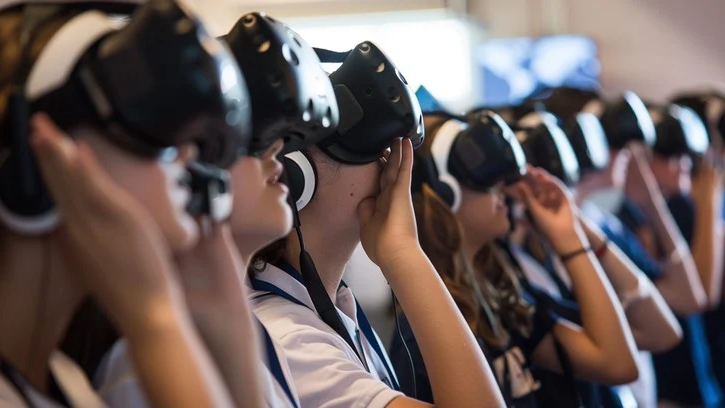
Where’s this headed? Microsoft’s training Muse on more titles, and Copilot for Gaming—think an AI coach whispering tips mid-match—is rolling out to Windows Insiders soon. Picture a future where AI co-designs levels with devs or crafts endless, personalized maps for players. Could it spawn wild new genres? Maybe. Or it might stay a quirky sidekick. For the US, home to gaming giants and rabid fans, it’s a trend worth watching—especially if it means more Quake-style blasts from the past.
Case Study: Beyond Quake II
Take Jasper, another AI tool making waves. US retailer Ulta Beauty used it to craft a 2023 campaign, generating snappy copy that boosted engagement by 20%, per Adweek. If Muse evolves, imagine it teaming up with tools like Jasper—AI not just building games but marketing them too. For American brands and creators, that’s a double win.
Final Score: Weird, Wild, and Worth a Shot
Microsoft’s AI Quake II is a hot mess—unstable, glitchy, and not exactly “fun” in the classic sense. But it’s also a bold peek at tomorrow. It’s preserving our gaming roots while hinting at a future where AI and humans collab on epic adventures.
Head to Copilot Labs, give it a spin, and decide for yourself: is this a nostalgic win or a tech misfire? Either way, it’s got us talking—and maybe that’s the real victory.
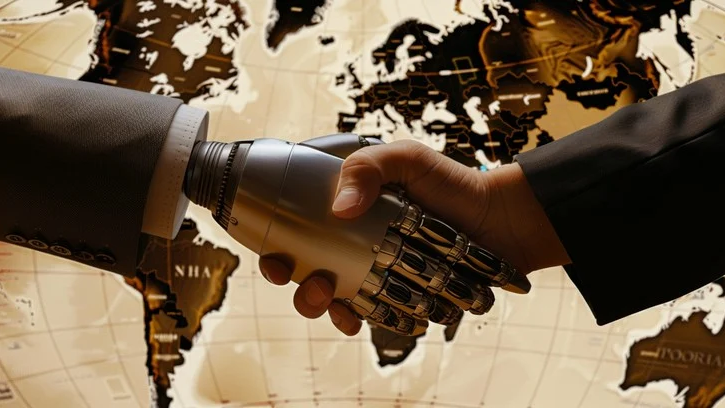
FAQ: AI in Gaming Quake II Unveiled
Here’s everything you need to know about Microsoft’s latest AI experiment shaking up the gaming world.
- Can Muse AI generate Quake II?
Absolutely! Microsoft kicked off its Xbox AI era in 2025 with the Muse AI model, designed to whip up gameplay from scratch. What started as a research project is now a reality—Copilot users can dive into an AI in gaming Quake II demo, where Muse generates levels and action live. It’s not the full Quake II experience yet, but it’s a wild proof of concept showing AI’s potential. - Can you play Quake II with Microsoft Copilot AI?
Yep, you can! Through Microsoft’s Copilot for Gaming platform, you get a browser-based Quake II tech demo powered by AI in gaming Quake II tech. Use your keyboard to roam a single level, dodging blurry enemies—though it’s more glitchy fun than a polished shooter. Fair warning: Microsoft caps your playtime at a few minutes, so don’t expect an all-night frag fest. - What is the Quake II tech demo?
It’s a sneak peek at AI in gaming Quake II-style, part of Microsoft’s Copilot for Gaming push. This browser-playable demo uses Muse AI to recreate a basic Quake II level—think blocky rooms and fuzzy foes. It’s a rough draft, not a full game, with limited playtime and plenty of quirks, but it hints at how AI could reshape classics for modern screens. - Is the AI-generated Quake II a good game?
Good? That’s a stretch. The AI in gaming Quake II demo is more weird than wonderful—blurry enemies, laggy controls, and a shaky world that feels like a dream gone glitchy. It’s upgraded from Muse’s original 10fps and 300×180 resolution to a playable 640×360, but it’s no match for the 1997 classic. It’s cool for novelty, not for serious play. - Is there AI in Quake III like this?
Not yet! While Quake III (1999) had smart bots that adapted to match stats, they’re old-school compared to the AI in gaming Quake II demo. Muse’s real-time generation is a different beast—no sign of it hitting Quake III yet, but if Microsoft’s on a roll, who knows what’s next? - Is the Quake II model tied to ZeniMax?
Yep, there’s a connection. Microsoft, owning ZeniMax (and thus id Software’s Quake legacy) since 2020, trained Muse on a Quake II level to flex its AI chops. It’s not a rip-off of ZeniMax code—just gameplay data turned into a funky, AI-driven simulation.
Connect With Us
We’re all about exploring the wild world of AI in gaming—especially mind-bending stuff like the Quake II demo—and we’d love to hear from you! Got thoughts on Muse AI, Copilot, or how AI’s shaking up your favorite games? Let’s geek out together.
- Drop a Comment: So, what’s your take? Will AI save gaming’s soul or just make us queasy? Hit the comments—I’m all ears!
- Subscribe: Sign up for our newsletter for exclusive AI storytelling insights and updates.
- Follow Us: Catch us on
- Get in Touch: Have questions or ideas? Email us at info@nextentertainmentwave.com—we’d love to hear from you!

